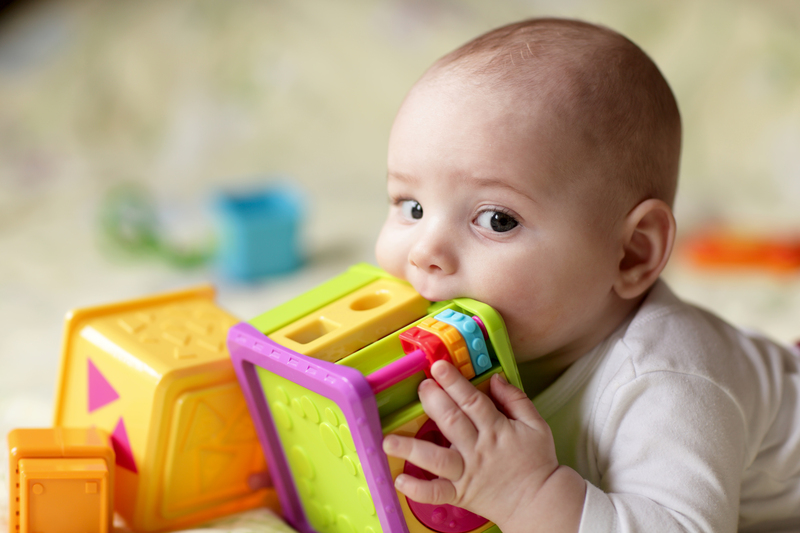Your Guide to a Spotless Stovetop: Eliminate Burnt-on Residue
Posted on 26/06/2025
Your Guide to a Spotless Stovetop: Eliminate Burnt-on Residue
Is your stovetop marred by stubborn, burnt-on stains and residue? If so, you are not alone! Everyday cooking can turn even the neatest kitchens into a battleground of spills and splatters, especially when food boils over or sauces simmer for too long. In this comprehensive guide, we reveal expert techniques and time-tested tips to help you keep your stove in pristine condition, no matter what you're cooking.
Why a Clean Stovetop is Essential
Before we dive into the specifics of eliminating burnt-on residue, let's understand why a clean stovetop matters:
- Prevents lingering odors from old spills and food residue.
- Ensures safety: Built-up grease is a fire hazard.
- Improves appliance efficiency and cooking results.
- Enhances the aesthetics of your kitchen environment.
With these benefits in mind, it is easy to see why investing a little time in stovetop maintenance pays dividends.

Understanding Your Stovetop Surface
Different stovetops require distinct cleaning strategies. Here's a quick overview of the most common types and their unique needs:
- Gas Stovetops: Characterized by removable grates and burners; usually made of stainless steel or enamel.
- Electric Coil Stovetops: Feature raised coils with removable drip pans.
- Glass or Ceramic Stovetops: Popular for their sleek, flat surfaces that require gentle care to avoid scratching.
- Induction Stovetops: Similar care requirements as glass stovetops, but can have unique cleaning instructions related to their technology.
Identifying Burnt-on Stovetop Residue
Burnt-on residue is any food, liquid, or grease that has been exposed to high heat and has solidified on your stovetop. This stubborn debris can:
- Resist ordinary wiping and require special attention.
- Cause discoloration or surface damage if not dealt with promptly.
Recognizing and addressing it early is key to maintaining a spotless stovetop.
Basic Maintenance: Daily Stovetop Cleaning Habits
Good habits are your first line of defense against burnt-on messes. Here's how to incorporate quick cleaning into your daily routine:
- Wipe up spills immediately: The sooner you tackle a spill, the less likely it will become burnt-on residue.
- Use a soft cloth or sponge: Avoid abrasive pads that can scratch your stovetop's finish, especially on glass and ceramic surfaces.
- Choose the right cleaning solution: Warm soapy water works for everyday messes; specialized cleaners may be needed for tougher jobs.
Deep Cleaning: How to Eliminate Burnt-on Stovetop Residue
Burnt-on food and grease require a more thorough approach. Let's break down the best methods for each type of stovetop, so your appliance will be gleaming in no time!
Cleaning Gas Stovetops
- Remove grates and burner caps: Let them cool completely before handling. Soak in a sink filled with hot, soapy water for 15-20 minutes.
- Scrub gently: Use a non-abrasive brush or sponge to remove burnt-on grime. For stubborn spots, sprinkle baking soda and add a dash of vinegar--let it fizz before scrubbing.
- Address the cooktop surface: Use a microfiber cloth with warm, soapy water. For persistent stains, make a paste of baking soda and water, apply, let sit, then gently scrub off.
- Dry and reassemble: Ensure all parts are completely dry before returning them to the stove.
Eliminating Burnt-on Residue from Electric Coils
- Unplug and cool: Always ensure the coils are cool to the touch and unplug the stove if possible.
- Remove and clean coils: Gently wipe with a damp cloth. If burnt-on spots remain, use a paste of baking soda and water, carefully scrubbing with a soft brush.
- Clean drip pans: Remove and soak these in soapy water; cover stubborn stains with baking soda paste, let sit, and scrub.
- Reassemble once dry to avoid electrical hazards.
Restoring Shine to Glass and Ceramic Stovetops
- Wait for the surface to cool: Never clean a hot glass stovetop! Wait until it is completely cool.
- Apply a cleaning solution: Use a dedicated glass stove cleaner or a mixture of white vinegar and water.
- Loosen burnt-on residue: For tough spots, lay a warm, damp towel over the stain for 10-15 minutes to soften the debris.
- Scrape gently: Use a plastic scraper at a 45-degree angle to remove softened residue. Avoid metal tools as they may scratch the surface.
- Buff to a shine: Wipe with a clean, dry microfiber cloth for a streak-free finish.
Special Tips for Induction Cooktops
Induction cooktops should be cleaned similarly to glass stovetops, but refer to your manufacturer's guide for special maintenance and cleaning recommendations. Always use gentle, non-abrasive products.
Natural and Homemade Solutions for Burnt-on Stovetop Messes
If you prefer to avoid harsh chemicals, try these safe and eco-friendly options:
- Baking soda paste: Mix 3 parts baking soda with 1 part water. Apply, let sit for 10-15 minutes, and scrub.
- White vinegar: A natural degreaser that cuts through residue. Spray, let sit, wipe away.
- Lemon juice: Its acidity helps break down grease and leaves a fresh scent.
- Salt scrub: Combine salt with a little water and gently rub for extra abrasion on durable surfaces.
These methods are gentle yet effective for eliminating burnt-on residue and keeping your stovetop spotless.
Preventive Strategies: Tips to Keep Your Stovetop Spotless
Prevention is the best strategy when it comes to keeping your cooktop clean. Here's how:
- Use pot lids: Prevents splatters and boil-overs.
- Wipe as you cook: Keep a damp cloth handy to quickly address spills before they dry out.
- Line drip pans: For electric stoves, disposable liners make cleanup a breeze.
- Cook at appropriate heat levels: Lower heat minimizes the risk of spills and burnt residue.
- Regularly inspect your stove: Early detection means easier cleaning. If you spot a spill or residue, address it as soon as possible.
Tools You'll Need for Effortless Stovetop Cleaning
Having the right tools ensures efficient and damage-free cleaning. We recommend stocking your kitchen with the following:
- Non-abrasive sponge or microfiber cloths
- Plastic scrapers (specifically designed for stovetops)
- Soft-bristle cleaning brushes
- Baking soda and white vinegar
- Dedicated glass stovetop cleaner (for glass/ceramic surfaces)
- Protective gloves
- Spray bottles for homemade solutions
These tools will help you tackle everything from everyday cleaning to the toughest burnt-on stovetop residues.
What to Avoid When Cleaning Your Stove
Sometimes, good intentions can cause damage. Avoid these common mistakes:
- Never use steel wool or abrasive scrubbers on delicate surfaces like glass or ceramic--they'll leave scratches.
- Don't soak electrical components. Always keep the electrical parts of your stove dry, especially with electric coil cooktops.
- Avoid harsh chemicals that aren't recommended for your stove's surface.
- Don't force stuck residue. Gentle, repeated treatments are safer than aggressive scraping or sanding.
Frequently Asked Questions About Stovetop Cleaning
How often should I clean my stovetop?
For optimal results, wipe down your stovetop daily and perform a deep clean at least once a week--or more often if you cook frequently.
Are commercial stovetop cleaners better than homemade solutions?
Commercial cleaners can be effective, especially for glass and ceramic tops, but homemade solutions like baking soda and vinegar are often just as effective--plus safer for the environment.
Can burnt-on residue damage my stovetop?
Yes! Persistent burnt residue can lead to surface discoloration, tough-to-remove stains, and even reduce the lifespan of your appliance.
Is it safe to use razor blades to clean glass stovetops?
While some people use razor blades with care, it is safer to use a plastic scraper designed for glass surfaces to avoid scratching or chipping your stovetop.

Conclusion: Enjoy a Spotless Stovetop Every Day
Eliminating burnt-on residue and keeping your stovetop spotless doesn't have to be daunting. With the right mix of daily habits, effective cleaning techniques, and a few basic supplies, your cooktop can stay as sparkling as the day you bought it.
Remember: Frequent, gentle cleaning is more effective than infrequent, aggressive scrubbing. A little upkeep goes a long way!
Key Takeaways
- Identify your stovetop type to choose the safest cleaning methods.
- Incorporate quick, daily cleaning to prevent residue buildup.
- Use natural or commercial cleaners to remove stubborn burnt-on grime.
- Stay proactive--prevention is easier than restoration.
With these expert tips, you'll master the art of keeping your kitchen spotless--one stovetop at a time!
Further Reading & Resources
- How to Clean Every Kind of Stovetop
- Stovetop Cleaning Advice from Good Housekeeping
- Step-By-Step Stovetop Cleaning
Make your stovetop shine and enjoy effortless cooking with your now spotless, residue-free cooktop!




